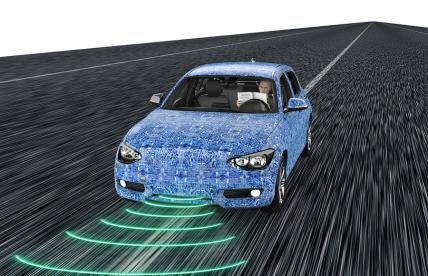Regulatory and Legislative Uncertainty and Evolving Technologies
The biggest safety challenges and risks facing the automotive industry lie in the current regulatory uncertainty in the US regarding rapidly evolving technology. Legislators struggle to keep pace with industry advancements.
This is particularly true with autonomous vehicles (AVs). AVs can range from vehicles that require reduced driver input, such as cars that have parking assistance or automatic braking, to vehicles that do not require any driver input at all (i.e., self-driving vehicles). To date, Congress has not passed any comprehensive legislation governing AVs. Both chambers of Congress came close to passing legislation (the American Vision for Safer Transportation through Advancement of Revolutionary Technologies Act (AV START Act) in the Senate and the Safely Ensuring Lives Future Deployment and Research In Vehicle Evolution Act (SELF DRIVE Act) in the House) in 2018, but those efforts failed over concerns with limitations on tort liability. Meanwhile, at least 38 states have enacted their own legislation governing AVs, with 12 states that authorize testing and 16 states that allow full AV deployment. Of these states, 18 do not require a human driver for testing or deployment. Generally, states’ authority over AVs is limited to licensing, operation on public roads, and testing/deployment, and the federal government is responsible for establishing safety standards for vehicle and equipment manufacturing.
Despite state legislative efforts, many AV stakeholders continue to see a role for the federal government in establishing a national framework for safety standards (including preemption of state laws), tort liability, and data sharing and privacy. However, any AV bills pending in these final few weeks of the current session of Congress are unlikely to pass because it is an election year in a polarized Congress. This is not the type of environment for achieving bipartisan compromise needed. While federal legislation is likely in the future, it will not be passed any time soon.
Regulating Without a Legislative Framework
The lack of a binding legislative framework for AVs for leaves the US Department of Transportation (DOT) and the National Highway Traffic Safety Administration (NHTSA) on their own in determining if and how to establish new safety standards to accommodate AVs (e.g., vehicles without steering wheels or brake pedals).
While some states have passed legislation for licensing, testing and deploying AVs as discussed above, federal safety standards still govern vehicle production and performance. In March 2022, NHTSA published a final rule amending “the occupant protection Federal motor vehicle safety standards (FMVSSs) to account for future vehicles that do not have the traditional manual controls associated with a human driver because they are equipped with Automated Driving Systems (ADS).” Specifically, this rule updated the FMVSSs to clarify requirements for ADS-equipped vehicles without traditional manual controls and clarified that vehicles with ADS technology must continue to provide the same level of occupant protection as current passenger vehicles.
In July 2022, two manufacturers petitioned NHTSA for limited, temporary exemptions from safety standards to deploy self-driving vehicles without steering wheels for ride sharing and delivery services. NHTSA has the authority to grant an exemption for up to 2,500 vehicles per year, though this process is cumbersome and slow-moving. NHTSA published notices in the Federal Register on July 21, 2022. The comment period ended on August 22, 2022, and NHTSA has not yet announced a decision.
According to US DOT entries in the Spring 2022 Unified Agenda, there are multiple anticipated rulemakings expected in 2023. Topics include amending Federal Motor Carrier Safety Administration (FMSCA) regulations “to facilitate the safe introduction of automated driving system equipped commercial motor vehicles”; developing a safety framework for assessing ADS; amending standards for safety warnings without traditional drivers; and seeking input on crash test procedures for vehicles without traditional drivers. However, federal agencies tend to include ambitious timelines in the Unified Agenda, and, in practice, the agencies typically fall behind. Instead, we expect formal notices of proposed rulemaking to be issued well into 2023 or even 2024 on these issues.
NHTSA’s Regulatory Approach Focuses on Self-compliance
NHTSA’s current regulatory framework focuses on selfcompliance – remedying safety concerns, not punishing manufacturers. In a complex industry like the automotive sector, recalls are a fact of life. This is particularly true with new technology on the market. For example, there have been several recalls in the last year for new technologies. We have seen multiple recalls involving software flaws impairing rearview cameras, videogames that were playable while driving, and self-driving features that allowed for rolling stops at intersections. At least two manufacturers are also being investigated by NHTSA’s Office of Defects Investigation due to hundreds of complaints of unexpected automatic braking, with reports indicating a sudden decrease in speed without an imminent hazard present. A recall of nearly two million vehicles was conducted due to this phantom braking issue.
The Obama and Trump administrations issued several consent orders to vehicle manufacturers – with sizeable civil penalties and sometimes with multiyear monitorships – for significant patterns of safety violations such as improperly reporting information during recalls. However, the Biden Administration has not yet issued a consent order to a vehicle manufacturer under similar circumstances. However, a manufacturer is now under criminal investigation by the Department of Justice and Securities Exchange Commission for AV-related technologies. The concern is that the manufacturer misled consumers and investors regarding its vehicles’ self-driving capabilities, posing a safety hazard to consumers that misunderstand and misuse (e.g., unreasonably rely upon) this feature.
One challenge for manufacturers is the varied and sometimes-conflicting public perception of AV technology. On one hand, some consumers are wary and may perceive the new technology as creating dangerous conditions without human control¬. On the other hand, consumers may think they are using truly driverless technology when that is not the case. US DOT Secretary Pete Buttigieg recently acknowledged the psychological hurdles that come with mass adoption of AV technology. According to the statistics, Buttigieg claims that, while no technology is perfect, AVs will make traffic safer by significantly reducing crash-related deaths which are often caused by driver error.
Reporting and Recall Procedures to Reduce Risk
Under NHTSA’s self-compliance framework, manufacturers can reduce their compliance risk while producing innovative technologies through careful self-certification to FMVSSs; prompt reporting to NHTSA and vehicle owners if those standards are not met or a defect is identified; and effective remedying of defects and noncompliances. Fundamental to these tasks is establishing a formal recall procedure. The procedure should include steps to actively monitor and investigate product concerns to determine if there is a safety-related defect or noncompliance present. Once a manufacturer determines that such a defect or noncompliance exists in its products, NHTSA has set timelines and procedures for notifying customers, performing recall remedies, and reporting to the agency on recall completions.
Note that even suppliers in the chain of production have recall-related responsibilities, including software companies. Automotive software suppliers are considered manufacturers of motor vehicle equipment and, as such, they are also subject to the same vehicle safety laws and regulations that require equipment manufactures to promptly notify NHTSA and customers of potential defects or noncompliances. As explained in a bulletin, NHTSA “also considers software (including but not necessarily limited to, the programs, instruction, code, and data used to operate computers) and related devices and aftermarket software updates, to be motor vehicle equipment within the meaning of the Safety Act.”
Manufacturers of motor vehicles and equipment also have obligations under the Transportation Recall Enhancement, Accountability and Documentation Act (TREAD Act) to document and report to NHTSA on three categories of information that could reveal the presence of a safety concern in their products. These include manufacturer communications; early warning reporting for deaths and/or injuries; and reporting of foreign recalls to the agency. NHTSA has a particularly low threshold for risk when a safety concern associated with a manufacturer’s vehicle or equipment results in one or more fatalities, and manufacturers should be prepared for follow-up inquiries and requests for additional information from the agency.






 i
i


